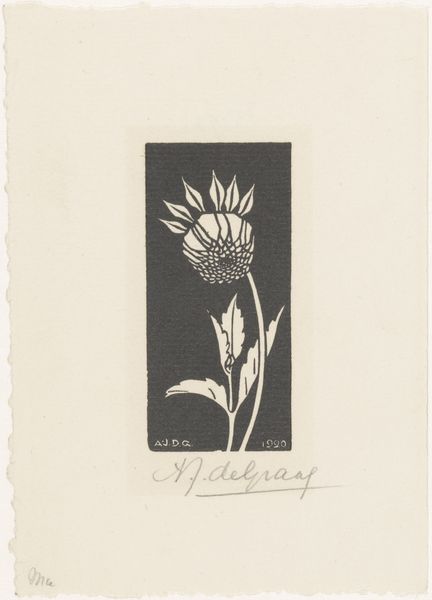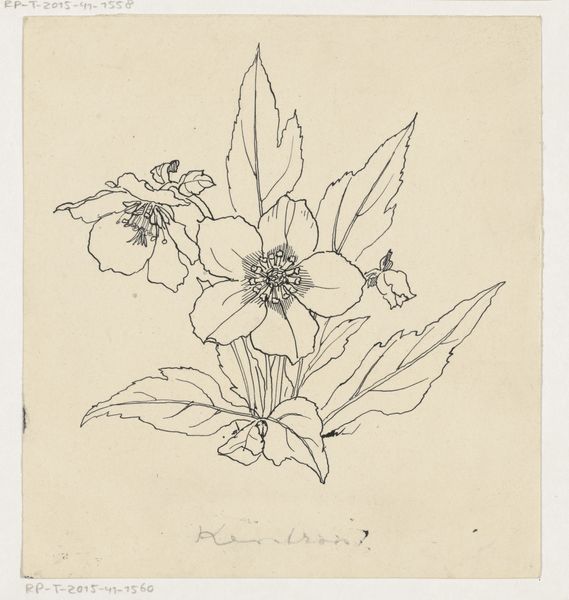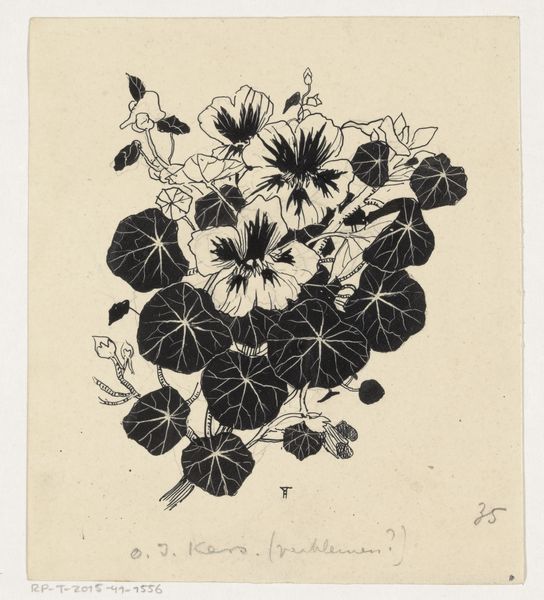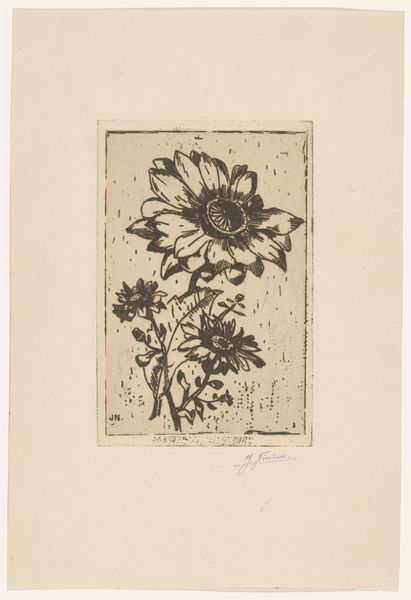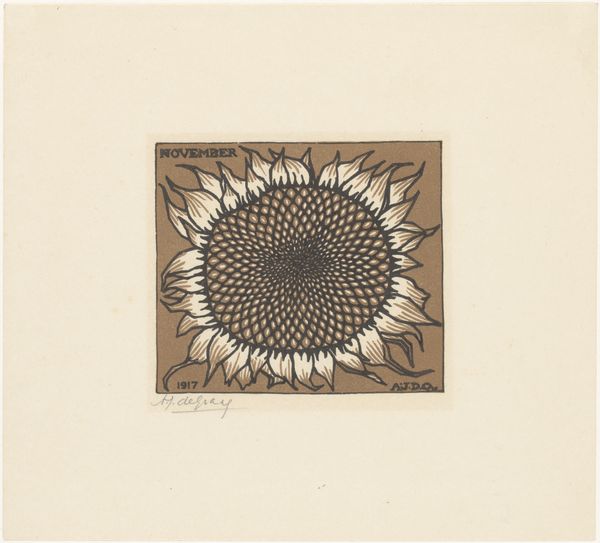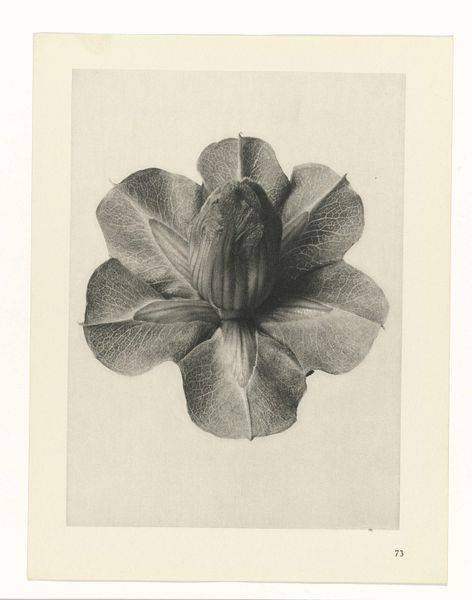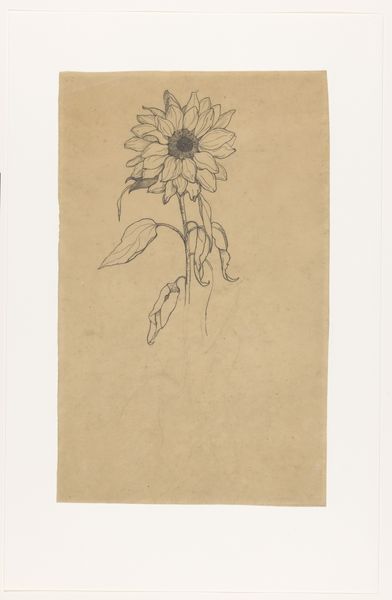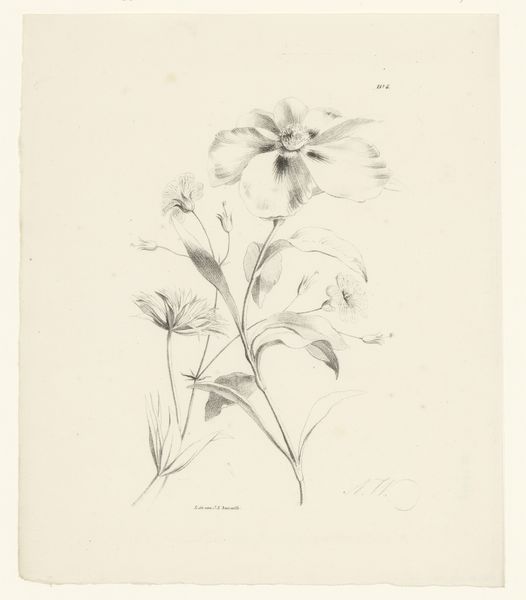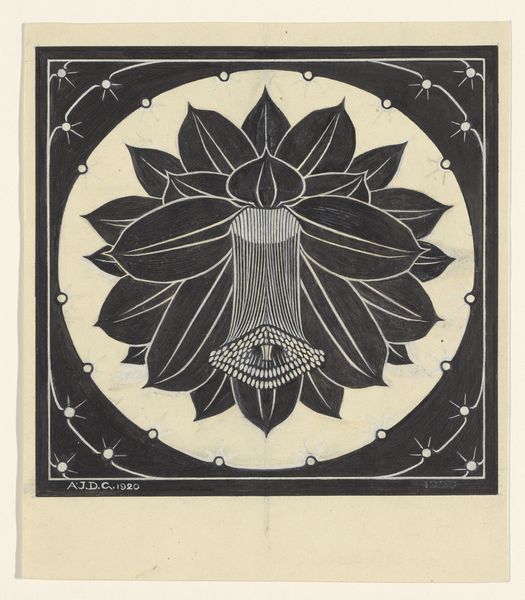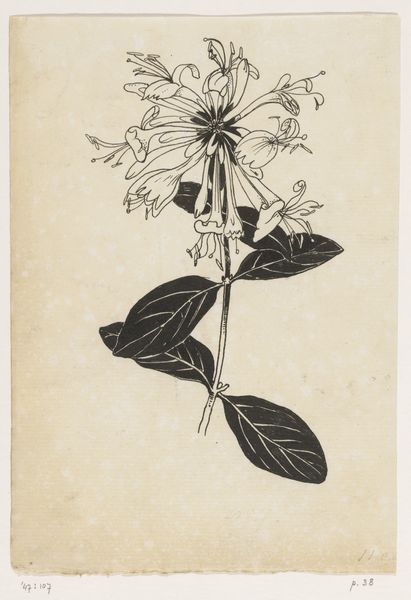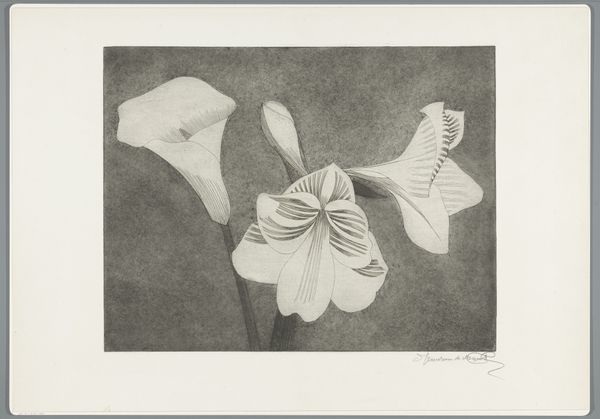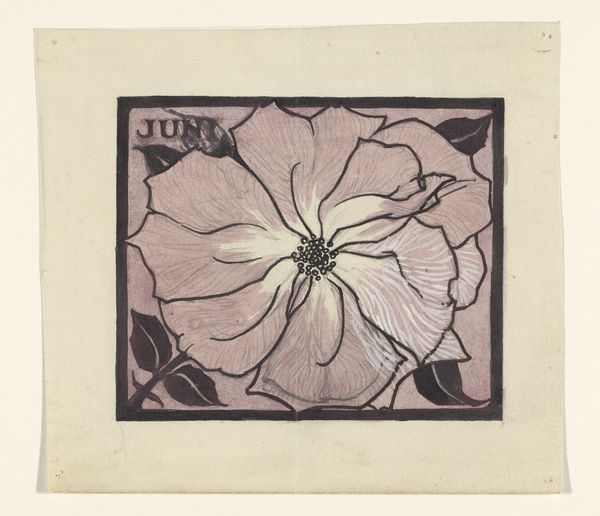
drawing, graphic-art, print, paper, woodcut
#
drawing
#
graphic-art
#
art-nouveau
# print
#
paper
#
geometric
#
woodcut
#
line
#
symbolism
Dimensions: height 130 mm, width 101 mm
Copyright: Rijks Museum: Open Domain
Curator: This is "Viool," a 1920 woodcut by Julie de Graag, now held in the Rijksmuseum. What are your initial thoughts? Editor: It’s surprisingly serene. The limited palette and stark geometry give it a subdued, almost melancholic feel despite the natural subject. I wonder about the labor involved in such a precise, repetitive cut. Curator: The Art Nouveau movement deeply influenced De Graag, and you can see that reflected in the stylized simplification of the floral form. There is a powerful female sensibility at play. It resonates with early 20th-century dialogues of the female form within nature's geometries. Editor: It's fascinating how she balances abstraction with the organic. The grain of the wood itself must have been a consideration, another material layer to the design and production process. Curator: De Graag worked during a period when women artists were actively challenging the traditional, often patriarchal, artistic narratives. Examining how the artwork sits inside feminist readings adds such a great value to appreciating the piece. It prompts questions about women's role in shaping modern art. Editor: And we can't forget that woodcut is inherently a reproductive medium. The artist created a matrix, from which multiples could be made and disseminated. So we have the artist’s labor in creating the image, then the further distribution of it… all factors impacting its social life. Curator: Exactly. By exploring themes of nature and geometry with an assertive female signature, it participates in the visual lexicon that was breaking gendered art norms. The flat, graphic quality emphasizes design and intentionality over purely mimetic representation. Editor: The intersection of those intentional choices about material and process shape its identity beyond just aesthetics; and also informs the artist's role within a changing landscape of craft and artistic production. Curator: I agree completely. It’s a piece that asks us to engage critically with not only its visual beauty but its contribution to shifting socio-cultural discourses around art, identity, and gender. Editor: Yes, thinking about the economics of printmaking coupled with De Graag's role offers many angles for discussion. A humble flower rendered powerfully complex.
Comments
No comments
Be the first to comment and join the conversation on the ultimate creative platform.
